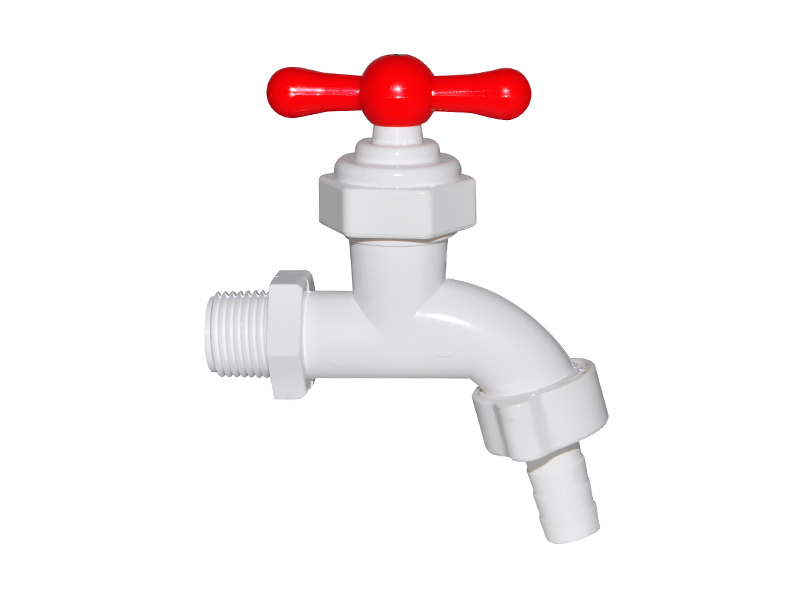How does the male ball valve design enable smooth and effortless on/off operation?
The male ball valve design is a key characteristic...
MORE >>















Ball valves and butterfly valves are both commonly used […]
Ball valves and butterfly valves are both commonly used in industrial applications to control the flow of fluids. While they serve similar purposes, there are key differences between these two types of valves in terms of design, operation, and application scenarios. Here's an overview of the differences and application scenarios for ball valves and butterfly valves:
Design:
Ball Valve: A ball valve consists of a hollow, perforated ball with a hole or bore in the center. The ball is positioned within a valve body and rotates to control the flow of fluid. When the ball's bore is aligned with the flow direction, the valve is open, and when the ball is rotated to block the flow, the valve is closed.
Butterfly Valve: A butterfly valve consists of a disc or plate that rotates within the valve body to control the flow of fluid. The disc is connected to a central spindle, which enables the disc to pivot perpendicular to the flow direction. The disc can be positioned parallel to allow flow or rotated to block the flow.
Flow Characteristics:
Ball Valve: Ball valves provide full flow with minimal pressure drop. When fully open, the bore of the ball valve creates a straight-through passage, allowing unrestricted flow of fluids. This design makes ball valves suitable for applications requiring quick opening and closing or where low pressure drop is desired.
Butterfly Valve: Butterfly valves provide a moderate flow with a slight pressure drop. The disc of a butterfly valve partially obstructs the flow, resulting in a more restricted flow path compared to ball valves. Butterfly valves are often used in applications where moderate flow control is required, such as in HVAC systems, water treatment plants, or low-pressure systems.
Size Range:
Ball Valve: Ball valves are available in a wide range of sizes, from small sizes for residential and commercial applications to large sizes for industrial use. They are commonly used in pipelines ranging from 0.5 inches to 24 inches and even larger.
Butterfly Valve: Butterfly valves are available in larger sizes, typically ranging from 2 inches to 72 inches in diameter. They are frequently used in large-scale industrial applications where larger flow capacities are required.
Sealing Mechanism:
Ball Valve: Ball valves typically use resilient or metal seals to achieve a tight shut-off when the valve is closed. The seals are compressed against the ball's surface to prevent leakage.
Butterfly Valve: Butterfly valves commonly use resilient seals, such as rubber or elastomeric materials, to create a tight seal between the disc and the valve body when closed. The flexibility of the seal allows for effective sealing across the disc's entire surface.

Operation:
Ball Valve: Ball valves operate by rotating the ball within the valve body using a lever, handle, or actuator. The rotation of the ball controls the flow by aligning the bore with the flow direction or blocking it.
Butterfly Valve: Butterfly valves operate by rotating the disc within the valve body using a lever, handle, or actuator. The disc's rotation controls the flow by aligning or tilting the disc to allow or block the flow.
Application Scenarios:
Ball Valve: Ball valves are suitable for applications that require fast and reliable shut-off, minimal pressure drop, and high flow capacity. They are commonly used in industries such as oil and gas, petrochemical, water treatment, and HVAC systems.
Butterfly Valve: Butterfly valves are commonly used in applications that require moderate flow control, such as water distribution, wastewater treatment, HVAC systems, and large-scale industrial processes.
In summary, ball valves and butterfly valves differ in terms of design, flow characteristics, size range, sealing mechanisms, and operation. Ball valves provide full flow with minimal pressure drop, while butterfly valves offer a moderate flow with a slight pressure drop. The choice between these valves depends on factors such as the desired flow characteristics, size requirements, sealing mechanism, and specific application scenarios.

The male ball valve design is a key characteristic...
MORE >>
In today's modern world, efficient and reliable wa...
MORE >>
Copyright ©All rights reserved:Zhejiang Xier Plastic Valve Lead Co.,LTD. PVC Ball Valves Manufacturers Technical support: HWAQ  浙公网安备 33060402001174号
浙公网安备 33060402001174号

 English
English España
España عربي
عربي